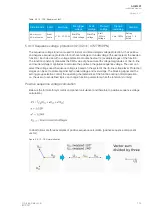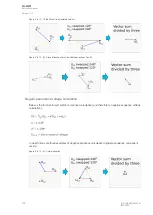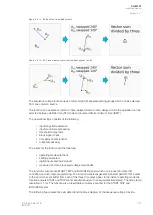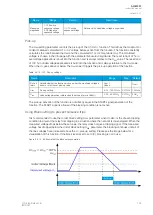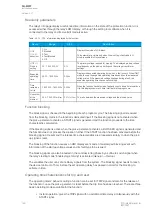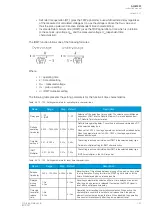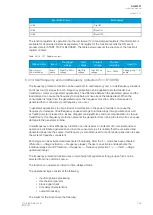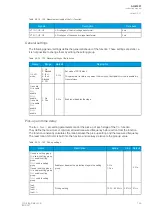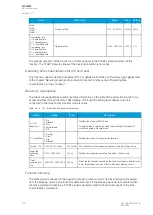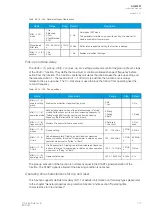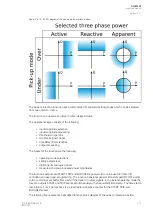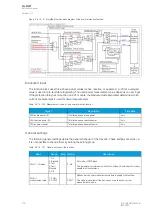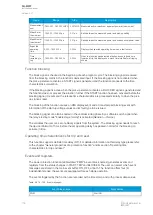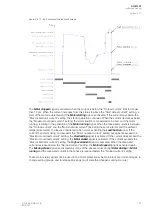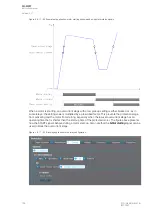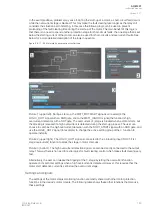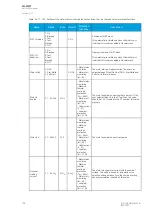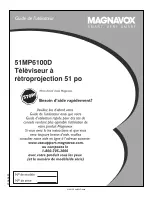
The rate-of-change of frequency protection can also be applied to detect a loss of mains situation. Loss
of mains is a situation where a part of the network (incorporating generation) loses its connection with
the rest of the system (i.e. becomes an islanded network). A generator that is not disconnected from
the network can cause safety hazards. A generator can also be automatically reconnected to the
network, which can cause damage to the generator and the network.
Figure. 5.4.15 - 88. Operation of the df/dt>/< function when the frequency starts but doesn’t trip.
The figure above presents an example of the df/dt>/< function's operation when the frequency is
decreasing. If the f<
limit
and/or f>
limit
is activated, the function does not trip no matter how fast the
measured frequency changes if it’s over the f<
limit
or under f>
limit
. As can be seen in the figure above,
when the frequency decreases under the f<
limit
,tripping is allowed although the change of frequency is
not yet fast enough for the function to trip. Later the frequency makes a fast dip and as a result the
change of frequency is faster than the set pick-up value which then causes the relay to operate.
Each stage can be activated and deactivated individually. After the f>/< mode has been activated
(
Protection
→
Stage activation
→
Frequency stages), the user can activate and deactivate the
individual stages at will (
Protection
→
Frequency
→
Frequency protection f >/<
→
INFO
→
Stage
operational setup).
The frequency protection function uses a total of eight (8) separate setting groups which can be
selected from one common source.
The function can operate on instant or time-delayed mode.
The operational logic consists of the following:
• input magnitude processing
• threshold comparator
• block signal check
• time delay characteristics
• output processing.
The inputs for the function are the following:
A
AQ
Q-M257
-M257
Instruction manual
Version: 2.07
© Arcteq Relays Ltd
IM00021
169
Summary of Contents for AQ-M257
Page 1: ...AQ M257 Motor protection IED Instruction manual...
Page 2: ......

